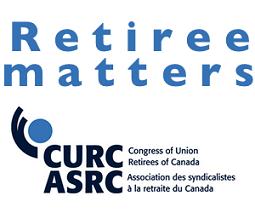Old Age Security (OAS) and the Guaranteed Income Supplement (GIS) are the only income for many women where they are guaranteed to receive the same amount as men, regardless of their labour force history. The proportion of income replaced by the OAS and the GIS is much higher for women and seniors with low incomes, about 70 per cent for those with individual incomes of less than $15,000. For women between the ages of 65 and 69, OAS and GIS reduce poverty by 21 percentage points. For men of the same age, it’s 15 percentage points. So, it is clear that rolling back the age of OAS and GIS is NOT gender neutral.
The OAS and the GIS reduce the lower income rate from about 30 per cent to about 12 per cent (more for women than men).
Raising the age of eligibility for the OAS/GIS from 65 to 67 would mean that non-working, low-income seniors on provincial social assistance and disability programs would have to wait another two years to transition to the OAS/GIS program, raising social assistance costs for provincial governments. The provinces would also have to pay more to provide drugs and essential services to low-income seniors who are unable to pay on their own.
Changing the eligibility age to 67 would mean the 35 per cent of OAS recipients who would be entitled to GIS at age 65 — mostly women — would lose those benefits as well. For those seniors entitled to this maximum amount (projected at 320,000 in 2012, mostly women) the loss of two full years of benefits would represent over $30,000.
Those workers most dependent on OAS/GIS income — women, workers with disabilities, individuals with lesser residency, the lowest income and long-term unemployed — will be hardest hit.
Also, in some provinces low-income seniors ages 65 and 66 could lose their eligibility for additional provincial supplements that are linked to GIS eligibility. For example in British Columbia, seniors receiving OAS/GIS stand to lose a $49.30 income supplement, a discount on bus passes and perhaps a reduction in property taxes. Another example, in Quebec, Employment Minister Julie Boulet said the age hike would cost her province “tens of millions of dollars” in welfare payments to low-income seniors between the ages of 65 and 67.
Prime Minister Stephen Harper and various government officials and MPs have attempted to justify the proposed cuts to the OAS/GIS program by arguing that the retirement of the baby boom generation and the related increase in the nominal dollar cost of OAS and GIS benefits are not sustainable. There is no evidence for this argument. It is noteworthy that Canada’s independent Parliamentary Budget Officer, Kevin Page, has stated OAS is affordable into the future without changes. The Congress of Union Retirees of Canada (CURC) urges Canadians to reject the Harper Government’s proposed changes to OAS/GIS and fight for improvements to retirement security for all.
Retiree Matters is a monthly column written by members of the Congress of Union Retirees of Canada (CURC) that explores issues relevant to retirees, senior citizens, their families and their communities. CURC acts as an advocacy organization to ensure that the concerns of union retirees and senior citizens are heard throughout Canada.
What’s Harper up to? Award-winning journalist Karl Nerenberg keeps you in the know. Donate to support his efforts today.



